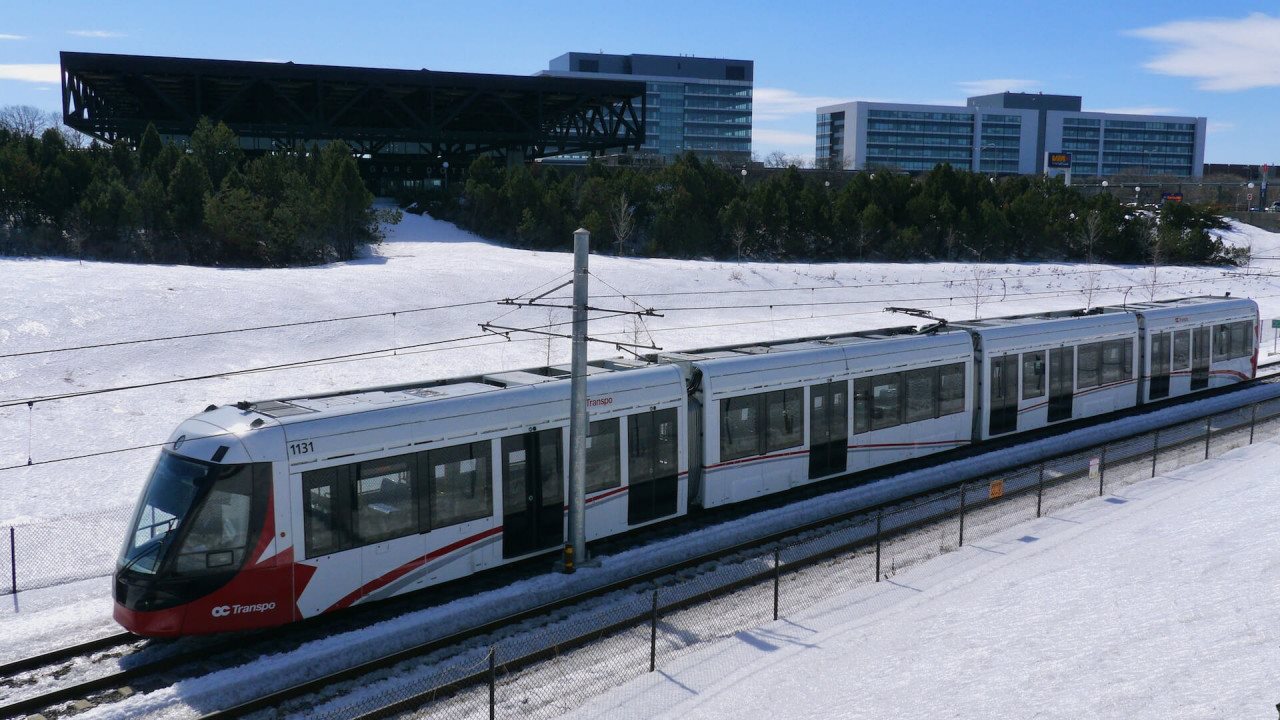OPINION : Winter Performance of the Alstom Citadis Spirit
"The biggest factor in winter performance will be the maintenance and proper cleaning of the tracks, not the vehicles."
In this article, I will share two opinion pieces that were written on the O-Train Fans Forums recently by myself and David Bellerive on the topic of winter performance of the trains on the Confederation Line (they can be found here).
The principal factor contributing to the train being "stuck" last winter was lack of track maintenance, in other words, the track was not properly cleared or maintained and the trains had not operated over that section in several days after a major snow storm. Naturally this will not occur in actual service, the trains will be operating continuously and in the few hours overnight that they are not, track maintenance will take place as required, with either track plows or blowers passing frequently, or the actual trains continuing to run back and forth.
I have never had concern over the winter performance. Last year's news was taken from a moment in time that was clear would lead to issues. The track hadn't been maintained (as it would have been in actual service) so a considerable amount of snow was on the guideway. Try driving an average car down a non-plowed street with 1-2 feet of snow. Very likely it's going to have a hard time or get stuck.
The plan calls for trains to continue to circulate overnight to keep the rails clear, upgraded track maintenance equipment to clear snow, among other things. Whether the trains are proven or not, I don't see how that is relevant. Just like a car it is the wheel only that makes contact with the ground (or in this case, track). Steel wheel train wheels have been in use for over a hundred years. This isn't anything new, and to push the point even further, they existed before cars and tires. Since their invention, they have advanced in design and material.
Steel train wheels are not an issue in winter, they have been proven to work. Look at the Trillium Line O-Train, I can't recall it ever getting stuck... nor do we hear about VIA Rail or CN or CP rail getting stuck in the snow in the news. Probably does happen from time to time but rare enough that we never hear about it.
Same for a car. You can have a Jeep Grand Cherokee 4x4 get stuck in snow in the right circumstances. With the right conditions it can happen, it's just 4 wheels touching the ground.
Same if you switch your Michelin X-ICE tires on the Jeep for slick Formula 1 dry tires. Probably gonna have issues in 1cm of snow, even though it's the same vehicle.
I think the hype on this topic in the media and on social media has gone too far, which is truly unfortunate. The Confederation Line trains use the same type of steel wheels as countless other trains. Those wheels are the only things that make contact with the ground/rail. What type of train those wheels are connected to has little bearing on the level of traction those wheels get. It's a matter of friction and physics.
What gives you better traction walking down the slippery sidewalk? Your summer flip-flops or your rugged big lug winter hiking boots?
Getting a bit off the rails here, but bottom line.... steel wheels are steel wheels. Been used forever, all around the world. That's what makes contact with the rail, that's where the traction and grip is, that's what matters most.
Steel wheels are proven.... what else matters?
by Shane Séguin
www.railfans.ca/forum/profile/2-shane
I think the problem is people don't think of it as "proven", but as "look how tiny those trains are!", especially compared to our mainline fleets.
The Citadis Spirit is a touch smaller than what is mainline trains in Europe and most other regions of the world, while the FLIRT / LINT / Talent are mainline trains for most of Europe. But here, mainline trains are heavier, bigger (even the LRC, which is "small" compared to other fleets, is still big when compared to European mainlines).
However, like you say, it fails to acknowledge both operational and functional design elements that are implemented on trains and rails for more than a century now. Steel wheels and their performance is a known variable, so is the need for track clearance. I believe RTG learned a lot from last winter's incident, and it will show in winter operating procedures.
For trains, bigger doesn't equal better winter performance. Simple as that.
Also worth noting is the nature of traction on the Citadis, and almost all DEMU / EMU trains: it is distributed power, which is low to the ground. This means increased traction, but also more efficient use of power in "sticky situations". There is no reason for the trains themselves to get stuck without other causes than bad track maintenance.
I know it's really popular to say RTG doesn't know what they are doing and "wait till winter" almost being an answer to anything, but it's bullshit to say they have no expertise in similar systems, and that we are getting a "value engineered" line. The Citadis is, IMO, the best vehicle for North American operation, beating the Flexity series. Train tracks are probably one of the most well-documented design in history, and the improvements over the close to 200 years of train operations show that it shouldn't be a concern. So whenever I hear someone say RTG is a bunch of frauds, I have to control myself in how I answer to their "stupidity". ?
by David Bellerive
www.railfans.ca/forum/profile/47-davidbellerive
